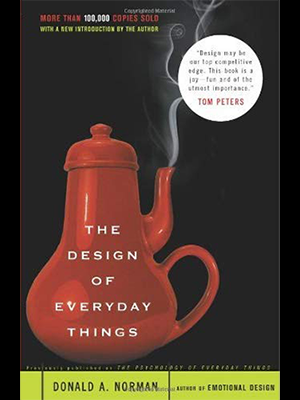Published 1986 (re-issued 2002). 2013 revised edition.
The Design of Everyday Things (DOET) was first published in 1988. The book is about how people interact with technology. The principles of interaction are mostly unchanged -- they still apply today. But the technology is very different. Time to revise. Hence DOET2.
I did a thorough revision. I updated all the examples, provided new photographs and drawings, and did a better job of explaining many of the concepts. In 25 years I have learned a lot, as has the field of design. I incorporate the principles of emotional design into DOET2. The last two chapters are new, explaining the problems of design in the practical world of business, competition, and the need for the company to be profitable. The design team has multiple constraints and challenges, a major one being what I call "Norman's law." The day the product team is established, it is behind schedule and over its budget.
The revised and expanded paperback is now available
Even the smartest among us can feel inept as we fail to figure out which light switch or oven burner to turn on, or whether to push, pull, or slide a door. The fault lies in product design that ignore the needs of users and the principles of cognitive psychology. A bestseller in the United States, this bible on the cognitive aspects of design contains examples of both good and bad design and simple rules that designers can use to improve the usability of objects as diverse as cars, computers, doors, and telephones.
Translations
- Dutch
- French
- Finnish
- German
- Italian
- Spanish (Spain)
- Japanese,
- Chinese (Taiwan).
- NOTE: UK edition is published by MIT Press.
Originally published in hard cover as The Psychology of Everyday Things (same book except for the preface, introduction, and title).
